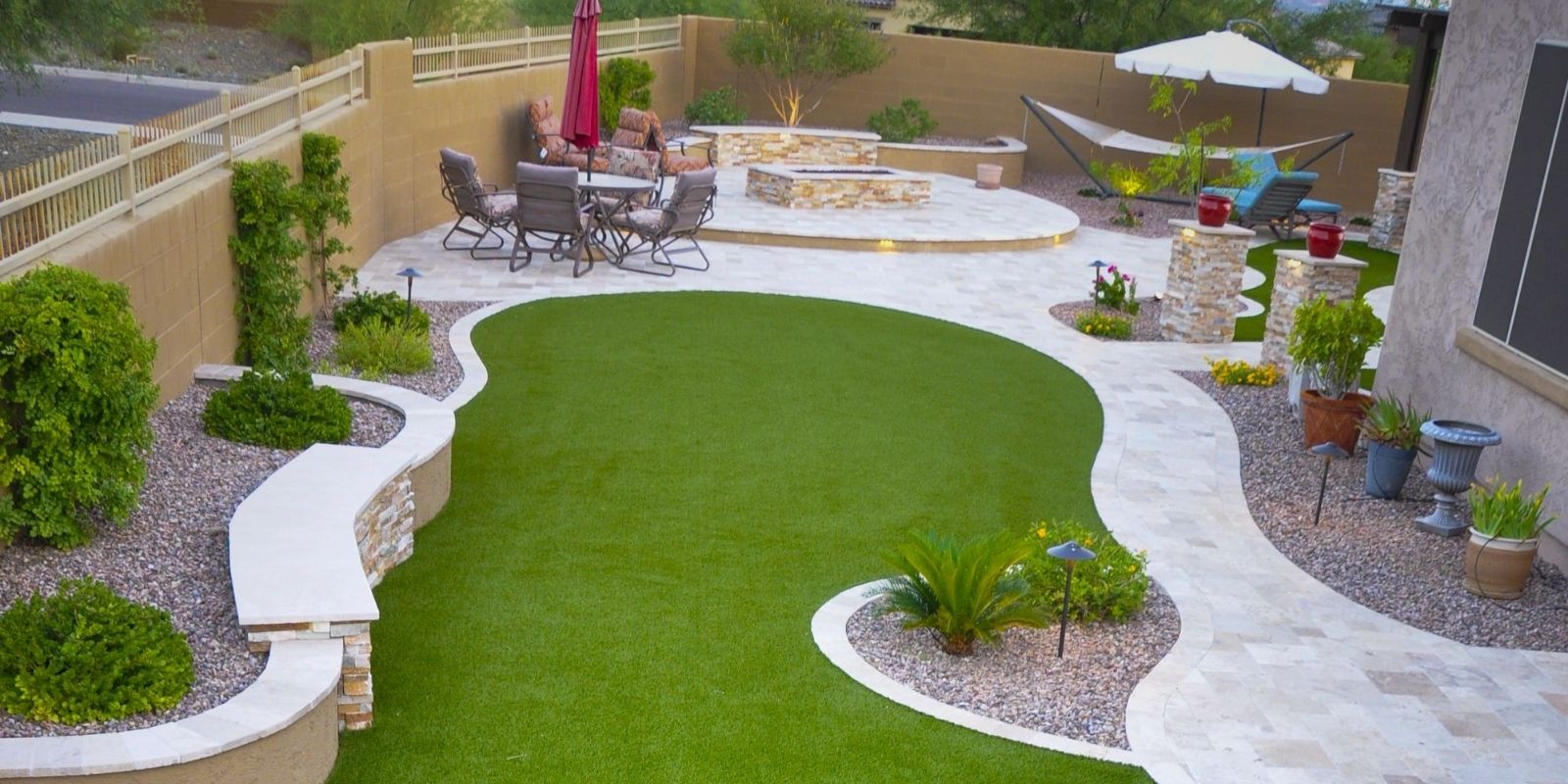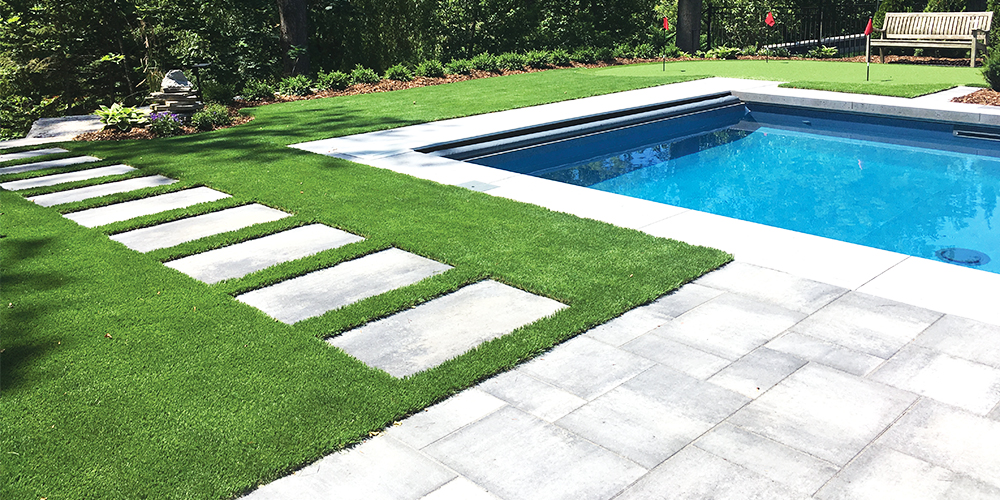Delve Into the Environmental Conveniences of Opting for Artificial Grass Solutions
The fostering of artificial turf options offers a compelling possibility to attend to pressing ecological difficulties. By substantially minimizing water usage and minimizing the application of damaging chemicals, these options not only advertise sustainable landscape design yet likewise protect regional environments. The reduced carbon impact associated with decreased upkeep activities contributes to a more sustainable strategy to land monitoring. The effects of these benefits extend past mere conservation initiatives, raising concerns regarding their long-term impact on habitat conservation and general environmental equilibrium. Exploring these measurements exposes a complex interaction worth thinking about.
Water Preservation Advantages
One of the most significant benefits of artificial lawn is its capacity to preserve water. In contrast, man-made grass does not require watering, substantially decreasing the overall demand for water resources.
By eliminating the requirement for regular watering, fabricated lawn contributes to lasting landscape techniques and aids alleviate the ecological influence of too much water usage. The preservation of water prolongs to the decrease of drainage, which can lead to dirt erosion and river pollution.
Furthermore, the installation of synthetic grass allows homeowners and districts to assign water resources extra successfully, concentrating on necessary usages such as alcohol consumption water and farming. The shift in the direction of synthetic grass not only advertises responsible water usage yet likewise aligns with broader ecological objectives intended at maintaining natural deposits.
As areas progressively focus on sustainability, the water conservation advantages of synthetic grass present an engaging instance for its fostering in commercial and residential landscape design jobs.
Minimized Chemical Usage
The shift to synthetic turf dramatically reduces the reliance on chemical therapies frequently made use of in natural grass upkeep. Conventional turf monitoring usually entails the application of fertilizers, chemicals, and herbicides to advertise growth and control bugs. These chemicals can posture threats to human wellness, regional wildlife, and the setting, adding to soil and water contamination.
On the other hand, synthetic grass eliminates the need for these hazardous compounds. As soon as set up, it needs marginal maintenance, mainly being composed of normal cleansing and seldom infill replenishment. This reduction in chemical use not just benefits the instant environment however also adds to more comprehensive environmental stability. By lessening the release of synthetic substances right into the environment, fabricated grass advertises much healthier soil and water supply.
Moreover, the lack of chemical overflow connected with synthetic grass installations helps protect neighborhood rivers from air pollution, supporting aquatic life and keeping biodiversity. Turf installation phoenix az. As neighborhoods progressively prioritize lasting techniques, selecting artificial grass presents a viable remedy that straightens with environmental conservation objectives. With this change, residential or commercial property owners can appreciate lush green areas without jeopardizing environmental wellness, leading the way for a much more lasting future
Reduced Carbon Impact

Moreover, the installation of artificial turf can lead to substantial water preservation. Natural lawns need significant quantities official statement of water for irrigation, which not only contributes to the carbon footprint linked with water removal and treatment but additionally strains neighborhood water sources. On the other hand, man-made grass needs minimal maintenance, calling for no watering, thus significantly lowering water usage and its associated energy expenses.
Furthermore, the longevity of man-made lawn adds to its decreased carbon effect. With a life-span of as much as 15 years or even more, the need for regular replacements is lessened, causing much less waste and lower power intake in production and throwing away traditional grass options. On the whole, fabricated turf offers a lasting option for eco aware landscape design.
Environment Conservation
Habitat preservation is a crucial factor to consider in the discussion over landscaping choices, especially when contrasting synthetic grass to natural yard. All-natural yard yards frequently call for substantial upkeep, consisting of making use of herbicides, fertilizers, and chemicals, which can detrimentally impact neighborhood ecosystems. These chemicals can leach right into the dirt and waterways, hurting indigenous flora and fauna and interrupting regional habitats.
In comparison, fabricated lawn presents a possibility to reduce the ecological impact of landscaping. By choosing artificial turf, house owners can reduce the disturbance of all-natural habitats associated with standard lawn care practices. Man-made grass removes the requirement for hazardous chemicals, thus securing neighboring wild animals and keeping the stability of bordering ecosystems. In addition, the installment of man-made grass can result in the conversion of former lawn areas right into more biodiverse landscapes, such as pollinator gardens or native plant locations, which can sustain neighborhood wildlife.
Ultimately, the transition to synthetic lawn not only saves water and reduces maintenance efforts however likewise fosters a more harmonious partnership between human tasks and the natural atmosphere, advertising habitat preservation while doing so.
Long-Term Sustainability
Lasting sustainability is a vital consider examining the benefits of synthetic grass over traditional turf lawns. Among the most substantial advantages of synthetic grass is its sturdiness; it can last up to 15-20 years with minimal upkeep, whereas natural yard requires constant reseeding and replacement. This long life decreases the requirement for continuous resources, Click This Link such as water, fertilizers, and chemicals, which are crucial for maintaining a healthy and balanced turf lawn.
Furthermore, synthetic grass adds to a reduction in carbon discharges related to yard care tools. Typical yards frequently need gas-powered lawn mowers, trimmers, and blowers, all of which add to air contamination. Turf installation phoenix az. In comparison, synthetic grass gets rid of the requirement for such tools, advertising a cleaner environment
Furthermore, the manufacturing of synthetic grass increasingly makes use of recycled materials, enhancing its sustainability account. As producers take on environment-friendly methods, the environmental impact of synthetic grass continues to lessen.

Conclusion
The fostering of synthetic grass solutions offers substantial environmental benefits, consisting of considerable water preservation, decreased dependence on unsafe chemicals, and a reduced carbon footprint. In addition, artificial lawn help in maintaining natural environments by decreasing land disruption and advertising long-term sustainability through the usage of resilient products. Collectively, these factors highlight the possibility of synthetic grass to contribute favorably to ecological health and provide a sensible option to conventional landscape design techniques in a progressively resource-conscious globe.
In comparison, man-made grass does not require watering, dramatically lowering the total demand for water resources. By decreasing the release of artificial compounds into the environment, synthetic lawn promotes much healthier dirt and water systems.
Additionally, the installation of synthetic lawn can result in substantial water preservation. In comparison, artificial lawn requires very little maintenance, calling for no watering, consequently significantly decreasing water use and its connected energy expenses.
